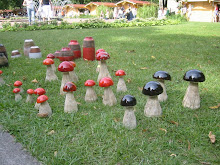· Design turns creative ideas to become practical and attractive propositions. It is a way of creative thinking, and a structured creative process with a set of skills, tools and methods.
·
Design is not art and craft. It creates value for businesses and goes much beyond aesthetic appeal. It can change the value of outputs, costs of inputs, and the efficiency with which inputs are turned into outputs. Design also improves quality of life by providing products and services more attuned to people’s needs and minimising the impact on the environment.
· Design can be used to:
o Differentiate products and services through a range of non-price characteristics from colour, style, ergonomics to performance and user experience
o Enhance product and service quality
o Improve efficiency in production or consumption of service
o Lower production/delivery costs and maintenance costs
o Manage risk by prototyping new ideas
o Enhance image of a product, a service and/or an organization
o Reduce the environmental footprint by reducing resources, waste and carbon emissions
Design has increasingly evolved to become a strategic tool and process, through which businesses use to identify and develop new market opportunities. The more design is embedded at the strategic level, the greater its impact is on the sustainable growth and development of an organisation. Similarly, design capability has to be developed across the economy and the society.
· Design is as relevant to public as to commercial organisations. Today’s public services must respond to new challenges such as an ageing population, social disparity, rising public demand, and the need for sustainable development. Efficiency alone cannot address these pressures.
·
Traditionally, design has been classified into different disciplines such as graphic, product, industrial, interior and fashion design; and more recently digital[2] and interaction design[3]. Some design disciplines such as industrial design are closer to sciences while others such as fashion design are arguably closer to the arts.
·
Service design is an emerging discipline focusing on the design of strategies, systems, processes and touch points. It aims at providing a unique and desirable experience to the user. It is a cross-disciplinary practice combining skills in various design disciplines, business, technology and the social sciences (anthropology, psychology and sociology).
·
Increasingly design can no longer be seen as discrete disciplines, but rather an array of interacting disciplines offering a strategic and total solution at the firm or society level. More and more leading education institutes in the world are offering inter-disciplinary design learning.
[2] Digital design focuses on the communication of messages and experiences that take place on computers, the internet, mobile phones, film, video and other digital technology devices.
[3] Interaction design shapes the experiences of people as they interact with products, services, people, environments across a variety of contexts.




No comments:
Post a Comment